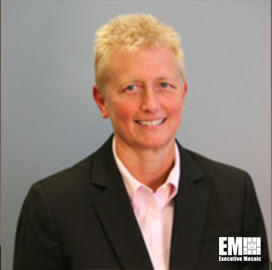
Jacobs has collaborated with Principal Investigator Dr. David Hanigan at the University of Nevada, Reno, to participate in a research and development grant from the Strategic Environmental Research and Development Program (SERDP) for Rapid Site Profiling of Organofluorine: Quantification of PFASs by Combustion Gas Analysis, the company announced on Thursday.
“Jacobs brings to this research project extensive planning, technical support, groundwater sampling and technology transfer experience gained on PFAS assessments at thousands of potential release locations around the globe,” said Jacobs People & Places Solutions Senior Vice President and Global Environmental Market Director Jan Walstrom.
SERDP was developed by the Department of Defense (DoD), the Department of Energy (DoE) and the Environmental Protection Agency (EPA) to leverage the latest science and technology to improve environmental performance, reduce costs, and enhance and sustain mission capabilities.
The objective of SERDP will be to develop and validate robust, field-ready instrumentation and methods to quantify total organofluorine. Jacobs will work to help the federal government reduce labor associated with site profiling and reduce analytical lab costs and uncertainty, leading to better site characterization and reduced duration of site remediation.
Sampling and quantifying per- and polyfluoroalkyl substances (PFAS) is required to assess impacts and remediate contaminated sites, but the process has proven to be time-consuming and has failed to capture many organofluorine transformation products and precursors with possible health impacts to exposed aquatic species and humans.
PFAS are released to the environment through several pathways, including use as aqueous film-forming foam (AFFF) for fire-fighting by the U.S. military and the aviation industry, as well as municipal and industrial fire departments.
The EPA has set health advisory levels for two PFAS based upon environmental persistence and adverse health outcomes, and the subsurface is contaminated with PFAS at multiple U.S. military bases, airports and industrial sites.
After SERDP is completed, the federal agencies expect benefits to the scientific community, including an increased understanding of organofluorine cycling in aqueous and soil systems and understanding of PFAS outside of those quantifiable by modern liquid chromatography.
For more than a decade, Jacobs’ water and environmental technologists have been supporting municipal, federal and commercial clients with PFAS assessment and treatment. Jacobs’ technologists and scientists have partnered with the world’s leading academics to better characterize, understand behavior and develop increasingly effective cleanup technologies for PFAS in groundwater and soil.
For example, in Jan. 2020, Orange County Water District (OCWD) selected Jacobs to participate in a pilot program to provide contracted treatment testing support services for perfluoroalkyl and polyfluoroalkyl substances (PFAS).
“Jacobs’ unique ability to shape the industry for PFAS solutions is drawn from our multidisciplinary capabilities in environmental, water, wastewater, solid waste, aviation and infrastructure,” said Walstrom.
PFAS are a family of oil and water-resistant chemicals found in everyday consumer products and airport firefighting foams that have infiltrated groundwater supplies over several decades.
Jacobs will help OCWD explore long-term solutions to ensure that water supplies continue to meet all state and federal water quality standards before the levels of PFAS in Orange County groundwater wells grow.
The goal of the pilot program is to help retail water agencies in Orange County determine the best available PFAS treatment methods. Jacobs will provide testing of different types of granular activated carbon (GAC), ion exchange (IX) products and adsorbents to determine which applications are best suited for Orange County’s diverse aquifer water quality and geochemistry.
“We challenge today and reinvent tomorrow by integrating both proven and leading-edge detection and treatment technologies to address PFAS chemicals transported in drinking water, groundwater, surface water, wastewater, leachate and soil,” added Walstrom.
About Jacobs
At Jacobs, we’re challenging today to reinvent tomorrow by solving the world’s most critical problems for thriving cities, resilient environments, mission-critical outcomes, operational advancement, scientific discovery and cutting-edge manufacturing, turning abstract ideas into realities that transform the world for good.
With $13 billion in revenue and a talent force of more than 55,000, Jacobs provides a full spectrum of professional services including consulting, technical, scientific and project delivery for the government and private sector.




